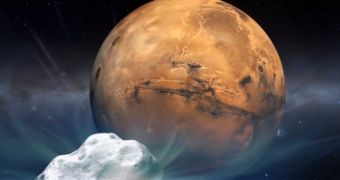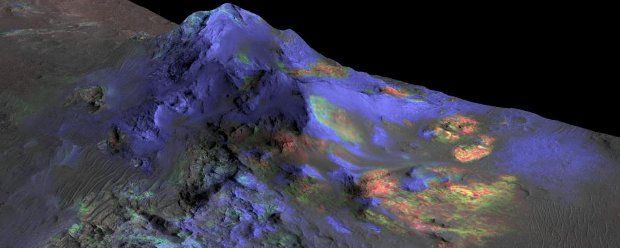The fact that the Red Planet has received a great deal of hits over the ages is no news for the scientific community. Au contraire, scars on the orb's surface bear testimony to its agitated history.
What's interesting is that, according to a team of researchers at Brown University in the US, rather impressive deposits of glass lie hidden in impact craters on Mars.
The glass, discovered using satellite data, is said to have formed when celestial bodies came tumbling down from the skies and hit the Red Planet releasing massive amounts of heat.
“Large glass deposits are present in several ancient yet well-preserved craters scattered across the Martian surface,” explain study leaders Kevin Cannon and Jack Mustard.
One of the impact craters that Mars Reconnaissance Orbiter data indicates hides deposits of glass goes by the name of Hargraves and sits close to a 400-mile-long (650-kilometer) depression.
Here on Earth, glass deposits formed by impactors are known to preserve organic molecules and even organic matter, kind of like how ancient insects are preserved in amber.
Supposing that Mars was once home to alien lifeforms, the Brown University specialists say that it might not be a bad idea to go in search of such microorganisms or at least their remains in the glass deposits.
“If you had an impact that dug in and sampled that subsurface environment, it’s possible that some of it might be preserved in a glassy component,” says researcher Jack Mustard.
Come 2020, NASA plans to land another rover on the Red Planet. Should the probe be deployed near the Hargraves crater, perhaps it could be sent to have a closer look at the glass deposits inside it.

 14 DAY TRIAL //
14 DAY TRIAL // 

